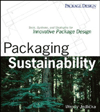Greening Supply
Collaboration Is a Requirement for Sustainable Change
Russian retailer X5 is setting the pace for the country’s sustainability efforts by getting supplier buy-in to green the retailer’s supply chain.

In the spring, X5 published Russia’s first sustainable packaging recommendations — representing the first time a large retailer has advised its suppliers to package their products in a way that is easily recyclable. This was not only a landmark achievement for the advancement of Russian retail as a global leader in sustainability, but it was also the result of extensive, industry-wide collaboration.
The initiative began as an internal goal — to increase the share of sustainable packaging used in X5’s own private label products to 50% by 2023 — which we expanded once we realized our vision for responsible packaging could be shared with our partners. When X5 set out to develop packaging guidelines to boost sustainability across the retail industry, we quickly realized a collaborative approach would be necessary — not only to create recommendations that are practical and applicable, but also to encourage buy-in along the entire supply chain.
This kicked off a year-long process. The guidelines cover 13 product categories, so we held discussions with the suppliers of all 13 types. We also considered the opinions of the expert community, including industry non-profits, packaging manufacturers and waste management companies. Before finalizing the recommendations, we hosted a public discussion attended by more than 100 stakeholder representatives. Gathering and including feedback from dozens of suppliers and experts was a significant undertaking, but we believe this collaboration was necessary for a successful result.
Power of Sustainable Packaging: A Look Into the Role Inks Play in Recycling – Part 1 of 3
In this episode, we’ll talk with Dr. Nikola Juhasz who will share how Sun Chemical is putting a focus on compostable, bio-renewable and recyclable solutions to help brands meet their sustainability goals.
The final document contains detailed recommendations covering three aspects of packaging: design, materials and information — including labeling, customer and employee education. The recommendations rely on the barrier properties of materials and other product specifics, and they account for existing legislation as well as the technology and infrastructure available in Russia.
Following the principles of partnership and free information exchange for the sake of global sustainable development, we published the guidelines to our website and are encouraging suppliers, partners, NGOs, industry associations and other retailers to freely use the information in their packaging production and management. Industry feedback has been overwhelmingly positive, which we believe is a direct result of our collaborative, cooperative approach to developing the guidelines. Further, the collaboration is ongoing, as the recommendations will be regularly updated to reflect changes in technology, infrastructure and the sustainability agenda. There is also potential to expand the recommendations, such as by encouraging suppliers to use reusable packaging for their products.
The motivation behind a collaborative approach goes beyond aiming to develop guidelines that work and that suppliers will want to implement — the gravity of the problem demands a team effort. Global plastic production began in earnest during the 1950s and has been extremely popular for packaging ever since, as it is easily mass produced, versatile and inexpensive. By 2015, 8.3 billion metric tons of plastic had been manufactured globally, generating 6.3 billion metric tons of waste. At this rate, by 2050, humankind will have produced 26 billion metric tons of waste, and currently, only 9% is recycled, according to research published in Science Advances. It is simply impossible for a single government, corporate or non-profit entity to tackle this problem alone, and so further collaborative approaches, such as the sustainable packaging recommendations, are necessary. Ultimately, we are not against the use of plastic, but it is important that packaging can be recycled and reused. The guidelines cover all types of packaging, including cardboard, plastic and metal, and how it is used — for instance, combining various materials in a single package can make it more difficult to recycle.
Another factor that elevates packaging sustainability solutions above any perceived competitive advantage to going it alone is customer demand. Globally, 80% of people believe it is the responsibility of manufacturers to help with the recycling and reuse of the packaging that they produce, a belief held even more widely in Russia at 88%, according to an Ipsos survey. The survey also found that people say they are ready for change, with three out of four global consumers reporting they want to buy products with minimal packaging, and 71% stating that single-use plastics should be banned immediately. Collaborative approaches to sustainability are corporations’ best bet to satisfy this increasing demand from customers for packaging to be environmentally responsible — and to do so as rapidly as consumers expect.
Industry partnerships are also a way to amplify educational messages needed to foster societal attitude shifts toward sustainability. That same Ipsos survey reveals that there are limits to changes people are willing to make to decrease their plastic use, with 63% willing to change where they shop to avoid plastic packaging. In Russia, where 80% of customers say they’re concerned about environmental issues, only 47% are willing to pay more for products that are less harmful to the environment. Corporations are best positioned to help close that gap, and through the implementation of sustainability strategies such as the packaging guidelines, the retail sector specifically has a prime opportunity to establish policies and programs that encourage change. At X5, we understand our responsibility to our 339,000-plus employees and to the roughly 15 million customers that visit our shops every day, as this scale of operations means that our company has an influential social role in Russia. Sustainability is an important component of our overall strategy, and to be successful, we must use our resources to lead and collaborate, supporting other companies to become more sustainable, as well.
Reducing the amount of packaging sent to landfills and promoting recycling are major environmental challenges faced by all retail companies, and so it is sensible that the industry should work together to find solutions. Although our approach to developing the sustainable packaging guidelines prioritized collaboration over competition, there is also a competitive benefit. The recommendations support suppliers of our products, packaging and materials as they work to meet the growing consumer demand for responsible packaging throughout the entire supply chain.
Looking for a reprint of this article?
From high-res PDFs to custom plaques, order your copy today!









